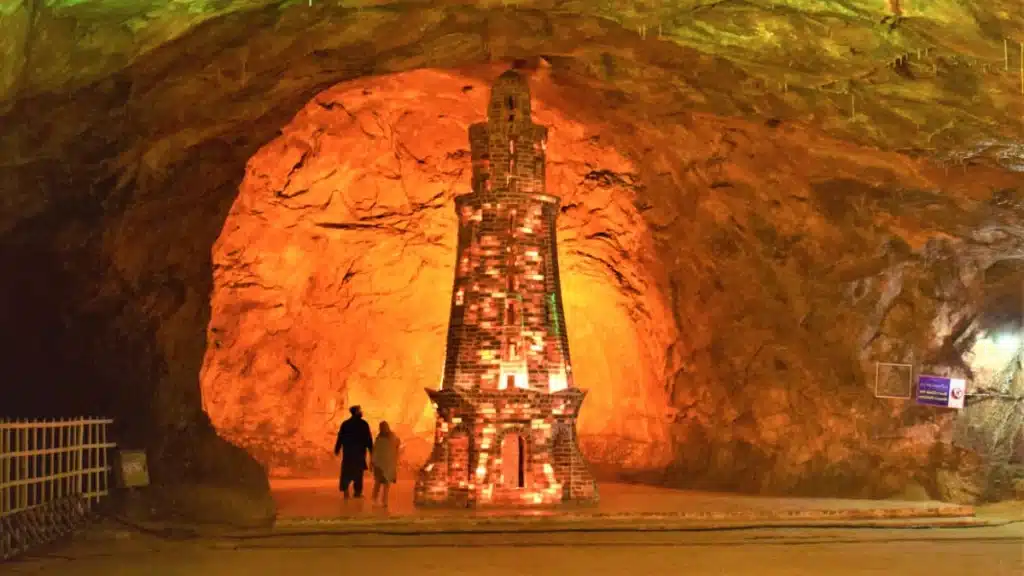Deep beneath the Earth’s surface, hidden from the bustling world above, lie some of nature’s most stunning and awe-inspiring wonders – the salt caves. These extraordinary underground formations are not only marvels of geological beauty but also repositories of ancient history and cultural significance. From the shimmering crystalline walls to the intricate sculptures carved by time and the elements, salt caves offer a captivating glimpse into the Earth’s depths and the remarkable forces that shape our planet.
Formed over millions of years through the dissolution and recrystallization of salt deposits, these caves are truly unique ecosystems, each with its own distinct character and charm. Some are vast and cavernous, while others are intimate and labyrinthine, but all share a mesmerizing beauty that has inspired awe and wonder in those who venture within.
In this article, we will delve into the depths of the world’s largest salt caves, unveiling their geological marvels, exploring their rich cultural heritage, and shedding light on the remarkable processes that have sculpted these subterranean masterpieces. From the otherworldly landscapes of the Khewra Salt Mines to the ethereal beauty of the Wieliczka Salt Mine, these caves will take you on a journey through time and space, revealing the hidden wonders that lie beneath our feet.
Khewra Salt Mine
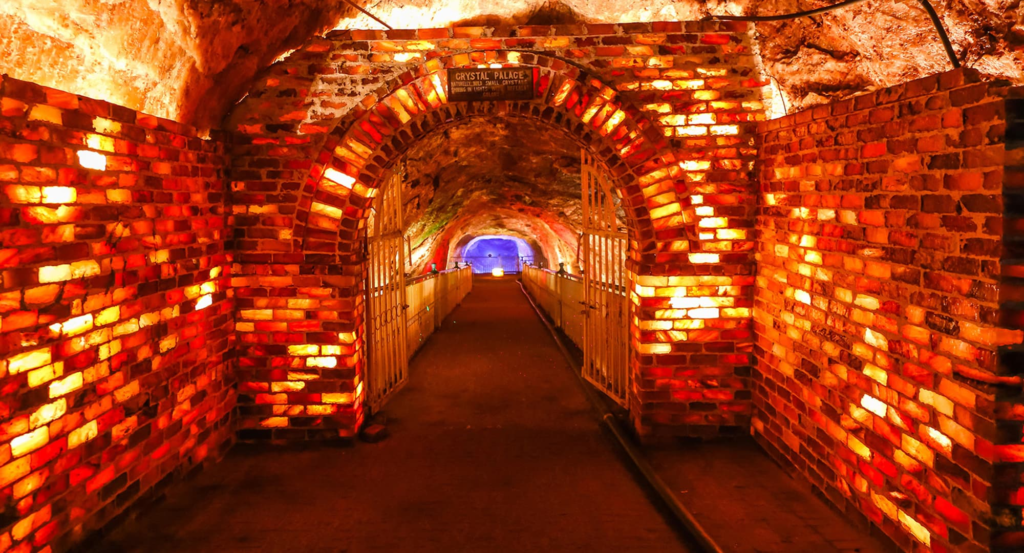
Located in the heart of the Punjab province in Pakistan, the Khewra Salt Mine is a true geological marvel and an underground kingdom of salt. Stretching over an incredible 300 square kilometers (116 square miles), this vast network of tunnels and chambers is one of the largest and oldest salt mines in the world, with a history dating back to the 320 BC Achaemenid period.
Within the depths of the Khewra Salt Mine, visitors are treated to a mesmerizing display of crystalline formations, ranging from intricate salt sculptures to shimmering salt lakes and even a mosque carved entirely from salt. The mine’s unique microclimate, with its constant temperature and humidity levels, has been lauded for its therapeutic properties, attracting visitors seeking relief from respiratory ailments and other health conditions.
Wieliczka Salt Mine
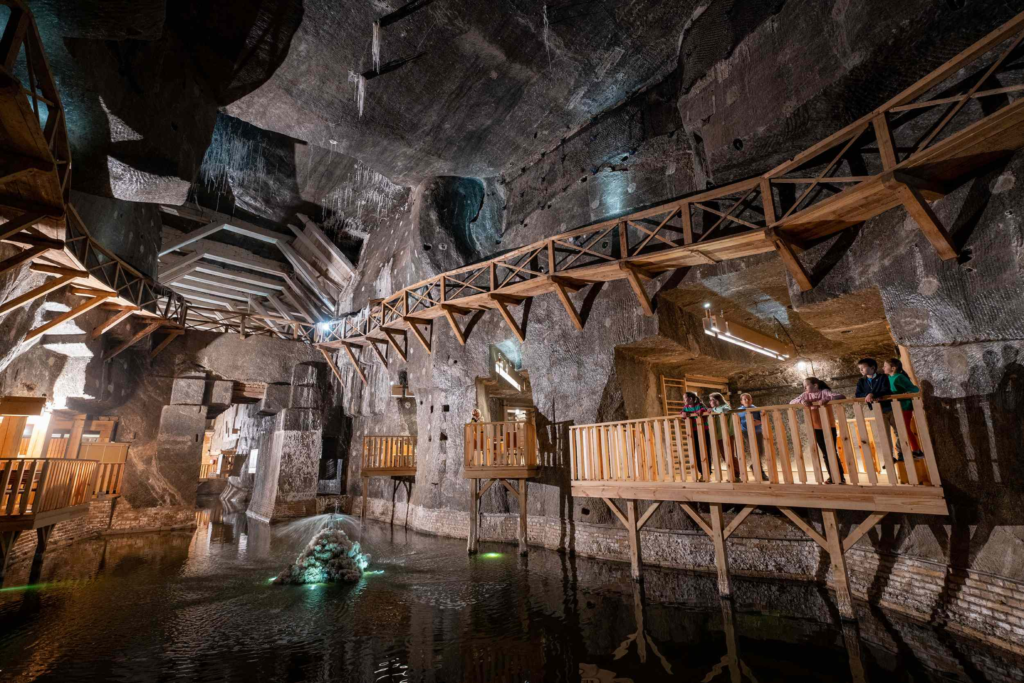
Nestled in the historic city of Wieliczka, Poland, the Wieliczka Salt Mine is a stunning underground marvel that has been recognized as a UNESCO World Heritage Site. Dating back to the 13th century, this salt mine is a testament to the ingenuity and artistry of generations of miners who have carved out a remarkable subterranean world from the salt deposits beneath.
The Wieliczka Salt Mine boasts an incredible network of tunnels and chambers, spanning over 300 kilometers (186 miles) in length and reaching depths of up to 327 meters (1,073 feet). Its labyrinthine passageways are adorned with intricate salt carvings, sculptures, and even entire chapels meticulously carved from the salt rock, creating a breathtaking and otherworldly environment that has captivated visitors for centuries.
Praid Salt Mine
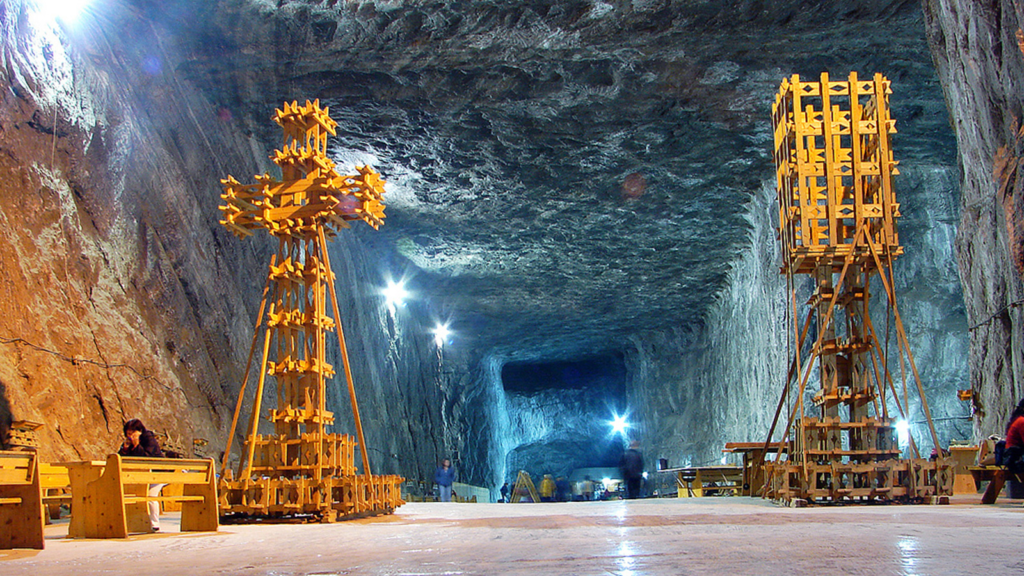
Located in the picturesque town of Praid, Romania, the Praid Salt Mine is a remarkable underground wonder that has been transformed into a unique and fascinating attraction. With a history dating back to the 17th century, this salt mine boasts an impressive depth of 120 meters (394 feet) and features a vast network of tunnels and chambers that have been carefully preserved and repurposed.
One of the most striking features of the Praid Salt Mine is its massive underground salt lake, which spans an impressive 3,500 square meters (37,674 square feet) and is surrounded by towering salt formations and intricate salt sculptures. Visitors can explore the mine’s depths, marvel at the unique geological features, and even experience the therapeutic benefits of the salt-rich air, which is said to alleviate respiratory conditions and promote overall well-being.
Salina Turda

Located in the heart of Transylvania, Romania, the Salina Turda is a breathtaking salt mine that has been transformed into a remarkable underground park and museum. With a history dating back to the 17th century, this salt mine boasts an impressive depth of 120 meters (394 feet) and features a vast network of tunnels and chambers that have been meticulously preserved and repurposed.
One of the most striking features of the Salina Turda is its massive underground amphitheater, which can accommodate up to 4,000 people and hosts various cultural events and performances. Visitors can also explore the mine’s depths, marvel at the unique geological formations, and even enjoy a variety of recreational activities, including underground boat rides, bowling alleys, and a ferris wheel – all set within the stunning salt-sculpted environment.
Chehrabad Salt Mine
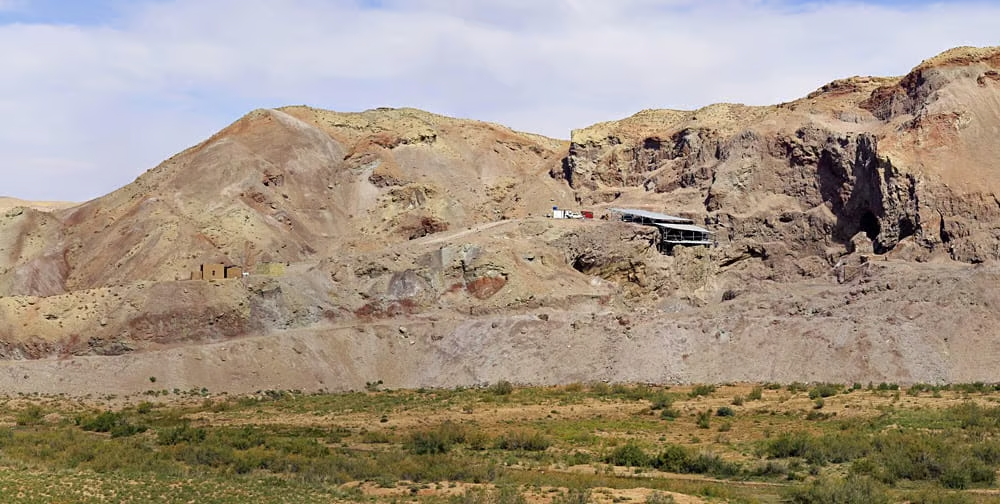
Nestled in the heart of the Semnan Province in Iran, the Chehrabad Salt Mine is a remarkable underground wonder that has captured the imagination of visitors for centuries. Dating back to the 16th century, this salt mine is renowned for its unique geological features and stunning salt formations, including intricate salt crystals, stalactites, and stalagmites.
The Chehrabad Salt Mine boasts a network of tunnels and chambers that span over 3 kilometers (1.9 miles) in length, reaching depths of up to 120 meters (394 feet). Within its depths, visitors can marvel at the mesmerizing play of light and shadow on the salt formations, creating a surreal and otherworldly atmosphere that is truly captivating.
Soledat Salt Mine

Nestled in the Pyrenees mountains of Spain, the Soledat Salt Mine is a remarkable underground wonder that has been transformed into a unique and fascinating attraction. With a history dating back to the 14th century, this salt mine boasts an impressive depth of 120 meters (394 feet) and features a vast network of tunnels and chambers that have been carefully preserved and repurposed.
One of the most striking features of the Soledat Salt Mine is its massive underground lake, which spans an impressive 2,500 square meters (26,910 square feet) and is surrounded by towering salt formations and intricate salt sculptures. Visitors can explore the mine’s depths, marvel at the unique geological features, and even experience the therapeutic benefits of the salt-rich air, which is said to alleviate respiratory conditions and promote overall well-being.
Slanic Salt Mine

Located in the picturesque town of Slanic, Romania, the Slanic Salt Mine is a remarkable underground wonder that has been transformed into a unique and fascinating attraction. With a history dating back to the 17th century, this salt mine boasts an impressive depth of 208 meters (682 feet) and features a vast network of tunnels and chambers that have been carefully preserved and repurposed.
One of the most striking features of the Slanic Salt Mine is its massive underground lake, which spans an impressive 4,000 square meters (43,056 square feet) and is surrounded by towering salt formations and intricate salt sculptures. Visitors can explore the mine’s depths, marvel at the unique geological features, and even experience the therapeutic benefits of the salt-rich air, which is said to alleviate respiratory conditions and promote overall well-being.
Zoutkelder Salt Mine
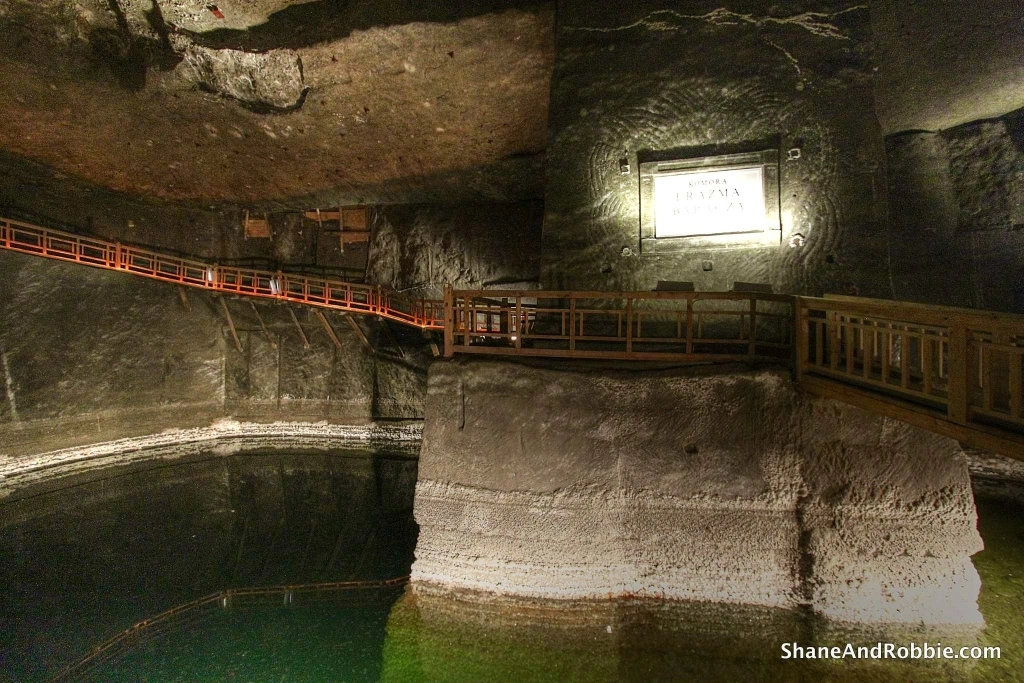
Located in the heart of the Netherlands, the Zoutkelder Salt Mine is a remarkable underground wonder that has been transformed into a unique and fascinating attraction. With a history dating back to the 16th century, this salt mine boasts an impressive depth of 120 meters (394 feet) and features a vast network of tunnels and chambers that have been carefully preserved and repurposed.
One of the most striking features of the Zoutkelder Salt Mine is its massive underground cathedral, which spans an impressive 3,000 square meters (32,292 square feet) and is adorned with intricate salt sculptures and formations. Visitors can explore the mine’s depths, marvel at the unique geological features, and even attend cultural events and performances held within the stunning salt-sculpted cathedral.
Bochnia Salt Mine

Located in the historic town of Bochnia, Poland, the Bochnia Salt Mine is a remarkable underground wonder that has been recognized as a UNESCO World Heritage Site. Dating back to the 13th century, this salt mine is a testament to the ingenuity and artistry of generations of miners who have carved out a remarkable subterranean world from the salt deposits beneath.
The Bochnia Salt Mine boasts an incredible network of tunnels and chambers, spanning over 300 kilometers (186 miles) in length and reaching depths of up to 327 meters (1,073 feet). Its labyrinthine passageways are adorned with intricate salt carvings, sculptures, and even entire chapels meticulously carved from the salt rock, creating a breathtaking and otherworldly environment that has captivated visitors for centuries.
Solikamsk Salt Mine
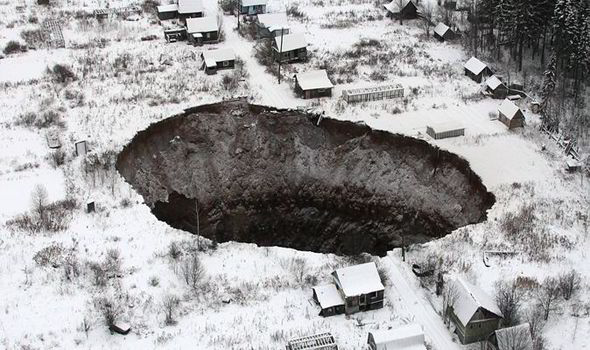
Located in the heart of the Perm region in Russia, the Solikamsk Salt Mine is a remarkable underground wonder that has captured the imagination of visitors for centuries. Dating back to the 16th century, this salt mine is renowned for its unique geological features and stunning salt formations, including intricate salt crystals, stalactites, and stalagmites.
The Solikamsk Salt Mine boasts a network of tunnels and chambers that span over 3 kilometers (1.9 miles) in length, reaching depths of up to 120 meters (394 feet). Within its depths, visitors can marvel at the mesmerizing play of light and shadow on the salt formations, creating a surreal and otherworldly atmosphere that is truly captivating.
Unirea Salt Mine

Located in the picturesque town of Slanic, Romania, the Unirea Salt Mine is a remarkable underground wonder that has been transformed into a unique and fascinating attraction. With a history dating back to the 17th century, this salt mine boasts an impressive depth of 208 meters (682 feet) and features a vast network of tunnels and chambers that have been carefully preserved and repurposed.
One of the most striking features of the Unirea Salt Mine is its massive underground lake, which spans an impressive 4,000 square meters (43,056 square feet) and is surrounded by towering salt formations and intricate salt sculptures. Visitors can explore the mine’s depths, marvel at the unique geological features, and even experience the therapeutic benefits of the salt-rich air, which is said to alleviate respiratory conditions and promote overall well-being.
Khunjerido Salt Cave
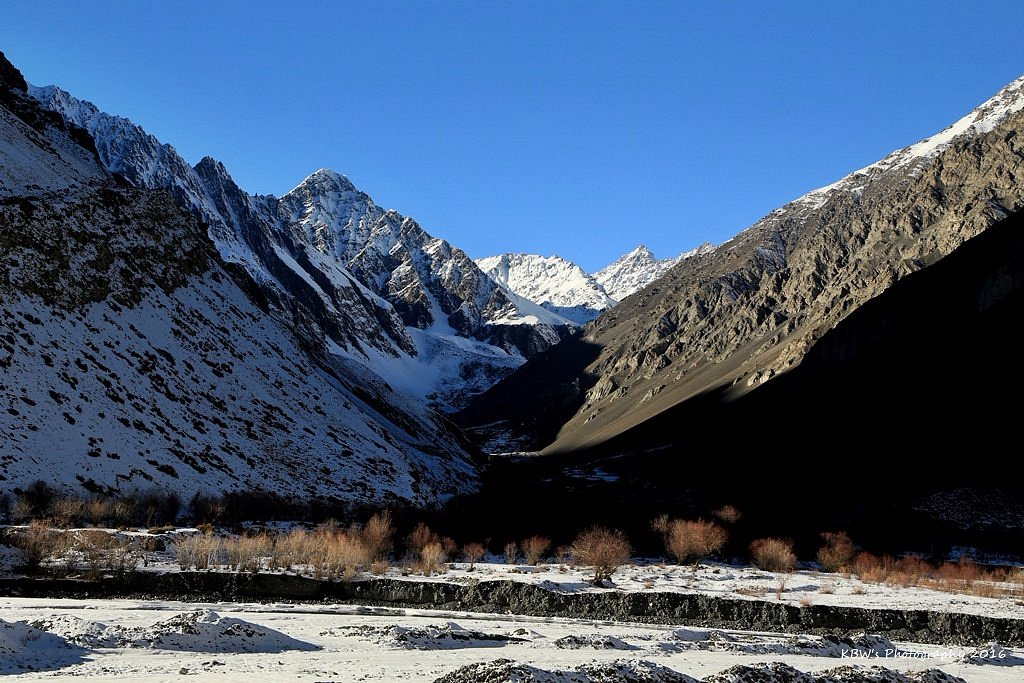
Located in the heart of the Gorno-Badakhshan Autonomous Region in Tajikistan, the Khunjerido Salt Cave is a remarkable underground wonder that has captured the imagination of visitors for centuries. Dating back to ancient times, this salt cave is renowned for its unique geological features and stunning salt formations, including intricate salt crystals, stalactites, and stalagmites.
The Khunjerido Salt Cave boasts a network of tunnels and chambers that span over 3 kilometers (1.9 miles) in length, reaching depths of up to 120 meters (394 feet). Within its depths, visitors can marvel at the mesmerizing play of light and shadow on the salt formations, creating a surreal and otherworldly atmosphere that is truly captivating.
Conclusion
The world’s largest salt caves are truly remarkable wonders of nature, each with its own unique geological features, cultural significance, and breathtaking beauty. From the vast underground kingdoms of the Khewra Salt Mine to the ethereal beauty of the Wieliczka Salt Mine, these subterranean marvels offer a captivating glimpse into the Earth’s depths and the remarkable processes that have shaped our planet over millions of years.
These salt caves not only serve as awe-inspiring tourist attractions but also play a vital role in preserving our planet’s geological heritage and cultural history. Many of these caves have been carefully preserved and repurposed, serving as unique venues for cultural events, therapeutic treatments, and scientific research.
As we marvel at the grandeur of these salt caves, we are reminded of the fragility and beauty of our natural world. It is our collective responsibility to protect and conserve these underground wonders, ensuring that future generations can continue to appreciate and learn from these geological marvels.
By promoting sustainable tourism practices, supporting conservation efforts, and fostering a deeper appreciation for the natural world, we can safeguard these salt caves and the invaluable treasures they hold. Only through a shared commitment to preserving our planet’s geological heritage can we ensure that these subterranean masterpieces continue to inspire awe and wonder for generations to come.

